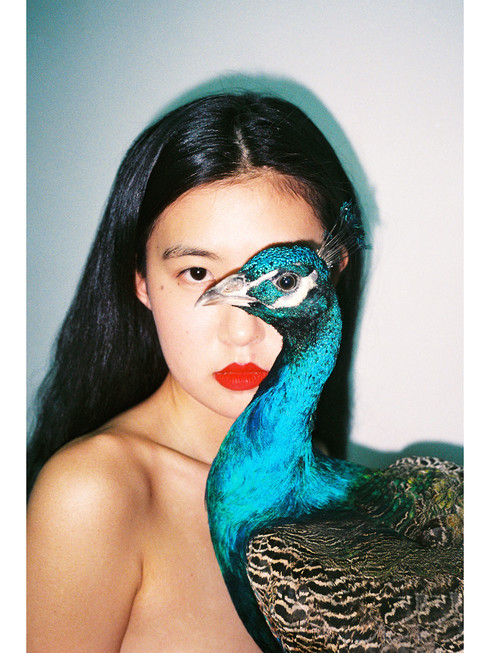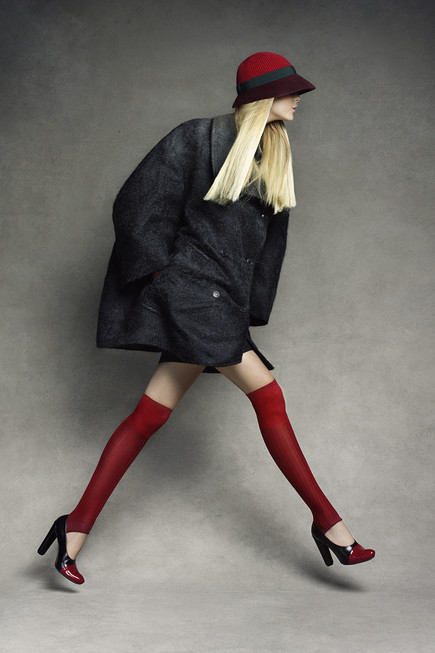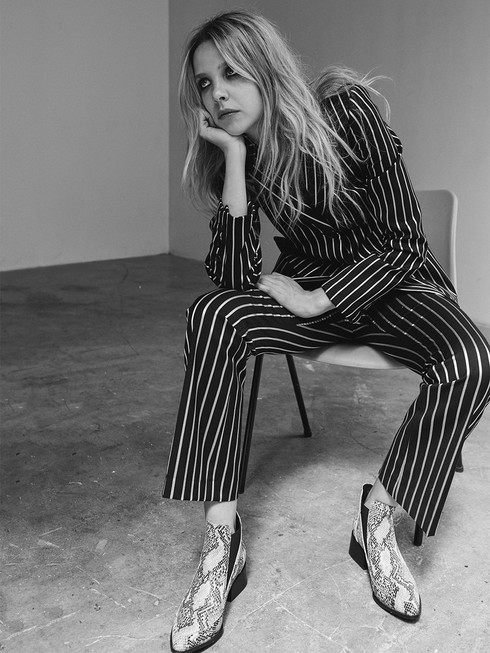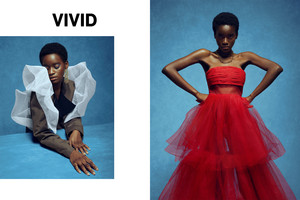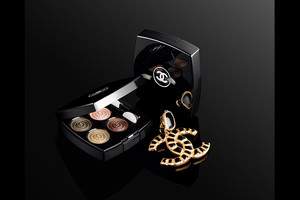REN HANG interview
Written by Mari FlorerREN HANG: “Everybody is the same but different”
When I met with Ren Hang, he had been in Sweden for four days, preparing for the opening of his current exhibition; HUMAN LOVE , at The Swedish Museum of Photography (Fotografiska), in Stockholm, (17.02.17 - 02.04.17).
Sadly, he took his own life just over a month shy of his 30th birthday,on February 23, 2017. This was less than one week after I said goodbye and wished him a pleasant trip to Berlin, where he was making a pitstop before headed hometown, Beijing, where his last days would be spent.
Hang caught me a little off guard at first with a cheeky one-liner that I normally would take offence to, as we were taking off our never ending layers of winter clothes, he says to me, “It feels that we should have sex right now”. Breaking the ice with some giggles, I felt like we both experienced the initial connection like a kind of ritual. I have read that Hang is shy, but this was not the impression I got - and of course not when one sees his art.
Presumably, his humour and mischievousness is one of the reasons why he was always surrounded by friends wherever he went in the world. Apparently, it was hard to get bored in his assembly. Many of his friends participated as models in his artwork, if you look at the pictures they are quite captivating and provocative, you can tell that he is connected on more than just a superficial level with his subject(s).
Some of the photos in HUMAN LOVE are more existential, showing naked bodies in front of nature. Others are more conceptual and direct, with rhythm and forms. Hang’s more controversial images are not in this exhibition, perhaps to cater to a wider audience or due to censorship issues in Sweden at such a public venue.
I understand why Hang preferred to work with his friends, it’s hard to direct someone you are unfamiliar with to perform like he wanted. In some of his pictures it feels like his friends were like his second family - their relation feels warm and intimate with love - HUMAN LOVE.
Hang did not like to place his art in contexts, so it was difficult to get him to talk about his art. He explained it like this:
“People are different. Even if I tell you that this is my finger you don´t think the same. Everybody see everything different and we all experience it individual. Everybody is the same but different.”
I am grateful I had the chance to meet such a talented artist. We met six days before his death, as I read our my notes over, I can't help but to keep thinking, this very well may be the last interview he gave. He didn't seem depressed, he could have been hiding it well, like many people who struggle with depression. He was so alive.
Interview with Ren Hang, February 17, 2017. Rest In Peace.
MB: I’m so curious, tell me a little about your family life.
RH: I have answered this question so many times. My family is a normal family and I´m the only child. My parents are not artists or anything, they have normal jobs.
MB: Are you happy with the exhibition at the Fotografiska?
RH: The Museum have been curated HUMAN LOVE almost all by them self. I think it’s good - I like it. Otherwise, I would have changed it.
MB: Can you tell me about the idea of the exhibition?
RH: The idea comes from The Swedish Museum of Photography. Not me.
MB: So, you think I should ask them?
RH: Yes. (laughs) It’s a really good question that I don´t need to answer.
MB: Are you always looking for models?
RH: Always.
MB: What kind of models are you looking for right now?
RH: I don´t know. I just use my feeling. Nothing else.
MB: You must get sent a lot of pictures sent to you.
RH: Yes, a lot of pictures, everyday! I get 2 to 10 every day from all over, not just asian countries.
MB: Do you reach out to any of them?
RH: No, I just look at the pictures - it´s very easy. Maybe I choose 1 of 100. I shoot my friends or friends of friends most of the time. I am more comfortable with photographing friends.
MB: What kinds of things do they write to you?
RH: It´s very simple. Name, phone number and: Hey, I want be a model... Some of them write: I love your work and I want to be a part of it…
MB: Can you tell me a little bit about the creative process behind your photos?
RH: I never plan before I shoot. I choose a place that looks nice, from a feeling that I get. Sometimes, I have been at the same place before and return to the same spot because I think it´s beautiful. I decide how the models are going to be shaped in my images.
MB: Do you memorise the places you've been that you like for future projects?
RH: Yes. I usually try to remember places I like, but unfortunately I forget sometimes.
MB: How much time do you put into a photo project? How long does it take to shoot a typical project of yours? Hours, days?
RH: I don´t really think about it, because I don´t work for anyone except myself and my friends. If the photograph is not good, we don´t care. If it´s really good, we don’t care. It´s just a shoot. It all depends on me or my friends mood. If we shoot one hour and we get tired we go and eat or drink and it's over. If we are happy and have a lot of energy,10 hours of working is not a problem.
MB: I have read that you think that erect penises are beautiful and powerful.
RH: It´s a half joke and half real. I consider that everybody thinks the same when they having sex with someone. I base it on the reaction of human beings.
MB: Do you think the same way about vaginas?
RH: Yes. Open pussy or erected dick, it’s the same.
MB: Who likes your photos and who invests in them?
RH: For now, the public collectors, like museums.
MB: Are you selling your pictures here?
RH: I do not know. It hasn’t been discussed yet.
MB: Would you like to sell them?
RH: I don´t care. If I´m selling that's good because I get money, so why not? If I don´t sell, we have a beautiful exhibition.
MB: Have you been arrested creating of your art?
RH: No, but I have learned how to run.
MB: Are you not scared?
RH: For now I´m not scared. In the beginning I was a little bit scared. Once, when I was in New York, someone was calling the police. If you get caught in N.Y. you could never come back into the country. But, I ran!
MB: There is an exhibition here in Stockholm with Ai Wei Wei, at Gallery Forsblom. He has curated one of your earlier exhibitions. How was it to work with him?
RH: It was easy to work with him. We had a meeting at his place and he said that he loved my work.
MB: Why did he loved your pictures?
RH: I didn´t ask. Maybe because I´m good? (laughs) No, I really don´t know.
MB: When are you going home?
RH: To China, on the 21st of February.
MB: What are you going to do until then?
RH: I´m going to Berlin to dance. I like dancing.
MB: What kind of music do you like to dance to?
RH: Techno
MB: Berlin has such an amazing nightlife scene! Where are you going to go dance?
RH: Techno at Berghain!
MB: How would you like people to interpret your photography?
RH: I don´t want to decide how one should see my photography, and I don’t care if you decide or not. I haven´t lived my whole life for this exhibition, it is only two months of my life - everything will be gone.
MB: What´s your next project?
RH: Staying alive.
MB: Do you want to be alive?
RH: I wish I would.



